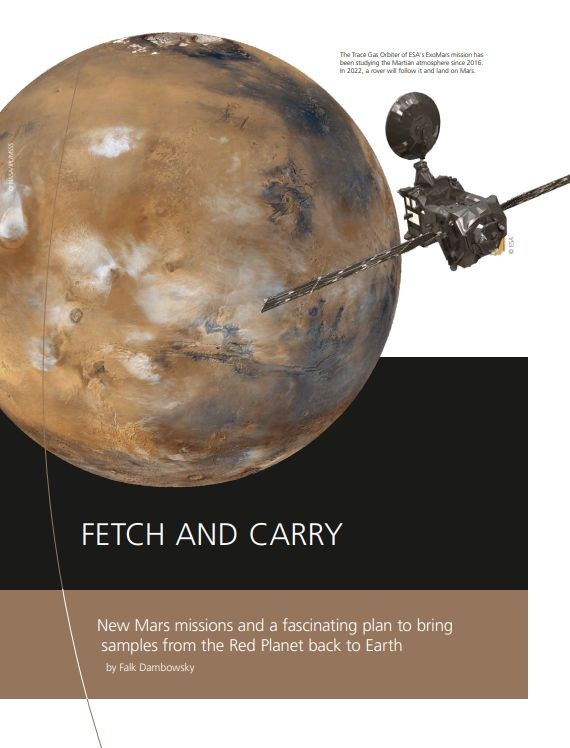Scientific goals of the Mars 2020 mission



One of the two main goals of NASA's Mars 2020 mission is to search for traces of microbial life (biosignatures) on Earth's neighbouring planet. The findings of all previous Mars missions, including ESA's Mars Express mission, suggest that the Red Planet was warmer and wetter until about 3.5 billion years ago. Water has left its mark on the surface in many ways, in the form of valleys, riverbeds, sediments or deltas. Branching valley systems similar to those on Earth indicate the existence of an earlier water cycle with precipitation. In addition, minerals containing water have been discovered, which indicate the previous existence of standing water. The NASA Mars Science Laboratory (MSL) mission's Curiosity rover found that there are indeed regions on Mars that might once have been suitable for life. So, the conditions for the emergence of life seem to have been there, but whether it actually emerged is the big question that Mars 2020 is intended to address. For this purpose, the Perseverance rover is examining rocks in Jezero Crater for biosignatures. A lake once existed in the crater, and traces of microbial life could have been preserved in the sediments deposited there.
The second main objective is to collect rock samples for the first time and deposit them on Mars. These samples will be brought back to Earth for analysis on a later mission.
Another mission goal is to find out more about the climate conditions on Mars in the past. To do this, Perseverance will examine the rock layers in Jezero Crater and perhaps even in the surrounding area. This is because each rock layer contains a 'record' of the conditions that prevailed when it was formed. To do this, the rover will look for rocks that formed in water and that contain evidence of organic matter – the chemical building blocks of life.
The mission will also test key technologies that could be used to exploit natural resources in the Martian environment for life support and fuel production. In addition, the rover is measuring weather and climate parameters with its instruments to better understand environmental conditions and to be able to protect humans on Mars in the future.
Mission objectives
- Obtain an answer to the question of whether life has ever existed on Mars
Investigating the Martian environment and looking for signs of fossil biosignatures in the landing site environment and collecting rock samples for later analysis on Earth - Sample collection
Perseverance is the first rover to bring a sample storage system to Mars, where promising samples will be collected for transport to Earth on a future mission - Characterisation of the landing site environment
The rover's instruments are looking for evidence of past habitable environments where microbial life may have existed - Investigating the geology of Mars
Rock layers in the crater are being studied to learn more about the geological processes that have created and changed the Martian crust and surface over time. The rover is also looking for rocks that formed in water three to four billion years ago and that contain evidence of organic matter – the chemical building blocks of life - Preparing for human exploration
Testing technologies that could one day support the presence of humans on Mars
Downloads
Related Links

